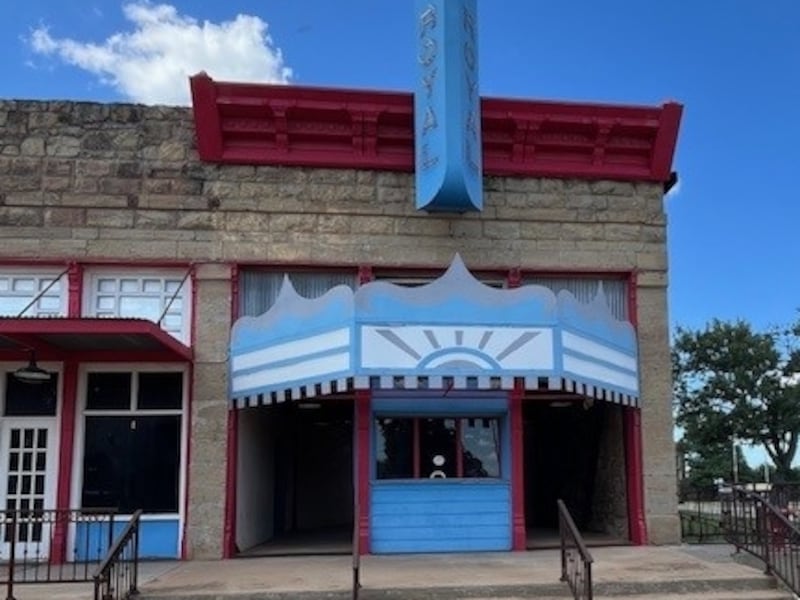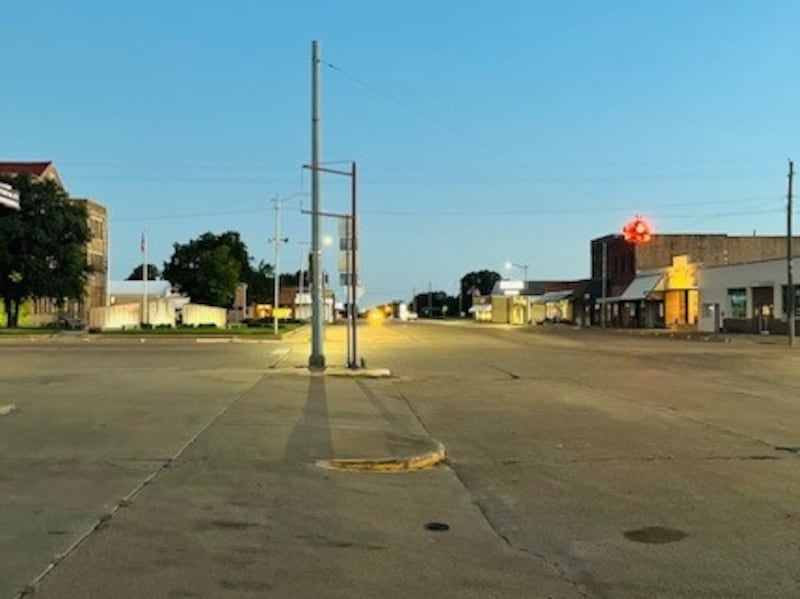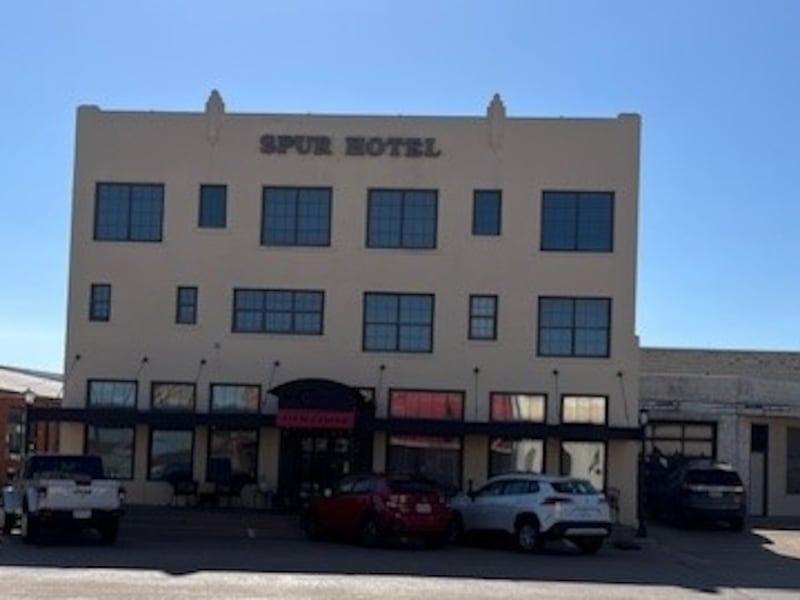It has shown no film since the fire in the mid-1960s and the exterior brick wall has entirely caved in, but the Royal, in a crossroads town on the plains of north Texas, remains one of the most important cinemas in America.
Johnny Hudson, the proprietor of the Spur Hotel, the oldest – and now the only – hotel in town shakes his head indulgently when asked if he was here when they shot The Last Picture Show in Archer City (pop 1,606) all those decades ago. “I sure was. I was in the film!”
He laughs and describes the scene where the school coach is putting the woebegone basketball team through its paces. Johnny got paid $125 a day, a princely sum in rural Texas, and spent a few magical weeks knocking around with Jeff Bridges and other cast members.
He was still in school but knew Larry McMurtry, the Archer City local who ditched the family ranching trade for the less likely world of writing books. The Last Picture Show was McMurtry’s second novel: an episodic tale of small-town restlessness and disenchantment in a small community set against an epic, brutal landscape.
READ MORE
The unsparing eye and sexual frankness so bothered McMurtry’s mother that she stopped reading after 100 pages and shut the book away in a closet, in the vain hope that if she couldn’t see it, maybe the rest of the world wouldn’t either. She nearly got her wish: the first run sold just 900 copies. Unfortunately, one of those made its way into the hands of Peter Bogdanovich, a young director brimming with intensity and ambition.

The “story” behind the 1971 film is still the stuff of podcast series and documentaries: it was fabled. Bogdanovich assembled a cast of veterans and future stars. He spent hours driving the plains and hill counties of Texas scouting for a suitable location with McMurtry before they finally arrived at the author’s hometown.
Bogdanovich was delighted when he saw Archer City and told McMurtry that this was the place for their fictive Anarene. “It ought to be. It’s where I was writing about.”
He enticed John Ford to persuade Ben Johnson to play the reticent Sam ‘the Lion’. Crucially, he followed the advice of Orson Welles and shot the film in black and white. The effects were stunning: every frame looked like a Dorothea Lange photograph.
Town elders were scandalised by the depiction of drinking and bed-hopping and the Archer County News wrote condemnatory editorials.
The Last Picture Show was nominated for eight Academy Awards and became one of the touchstone films of American cinema. Here was a new voice delivering an urgent message from an obscure part of the United States, forcing the metropolitans to wonder at what it must be like: to live way out there – way in there! – when electrification and the cinema were the chief changes since the frontier days.

Even now, Archer City is everything and nothing: a geometrically perfect crossroads with a four-way traffic light suspended like a medallion at the centre point of the wide streets and a low, aching breeze which comes through summer and winter. From Dallas, the road to Archer is transformed from the complex arteries of the metropolitan system to major highways and then, for the final hour, a thin straight ribbon of road where you seldom meet another car. Fields, oil drills and an enormous, humbling sky: it is stunning in its sparsity.
When I arrived, late on a Saturday afternoon, the downtown cafe had closed and it was just hot: degrees of still, heavy heat and bright sunshine which bounced off the asphalt and that iconic traffic light gently swaying.
“There’s always a wind here,” Johnny confirmed. “Probably because there’s so few trees.”
Around teatime, he takes me to the country club for a quick beer. McMurtry’s house is beside it. From the window of the club, you can see the reservoir where Sam the Lion goes fishing and delivers life advice to the youngsters. Sam the Lion’s pool hall, the salvation for the 1950s adolescents, was a shack directly across from the Spur and has since gone but the town is otherwise unchanged.
And it’s no surprise Archer City has not traded or hawked its place in Hollywood history. There is no explicit reference to The Last Picture Show, except for the preserved of the Royal Theater. Johnny took over the Spur just a few years ago. The foyer is a splendour, filled with books by McMurtry and other classics of southern literature.

We chat about life through the decades in Archer City – the vagaries of the oil and cattle economy; the all-state Wildcats team of 1964 and McMurtry, the town’s most famous son who went on to have an epic writing life and always kept a home in Archer City and liked to wander over to the Dairy Queen, where he sipped Dr Pepper.
In his later years, he opened four bookstores in the town, where his extraordinary collection was on sale: it was his dream to turn his off-grid hometown into a north Texan Haye-on-Wye for book lovers. For a while, it worked. But McMurtry died in 2021. The shops were sold as part of his estate and now all four are closed: somewhat sadly, you can peer through the windows at the breathtaking array of books with no readers.
As the writer Rachel Monroe observed: “McMurtry had followed the family tradition after all, lashing himself to a dying industry and getting his heart broken in the process.”
Bogdanovich died in January 2022 and his future celluloid stars – Bridges, Cybill Shepherd, Randy Quaid – are senior citizens. But the dateless star of his bleak masterpiece was always Archer City, with that low wind and the silence broken by the growl of trucks shooting through and the Spur Hotel, where you can sit on the porch in the intense stillness and hear the jangling breeze and observe that traffic light, still flashing with eternal patience from green to red and still waiting for something to happen.
















